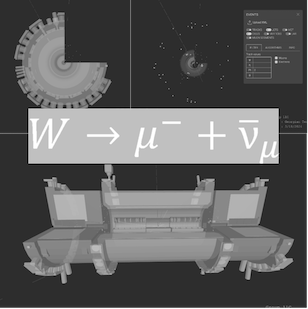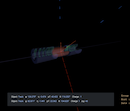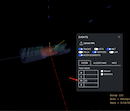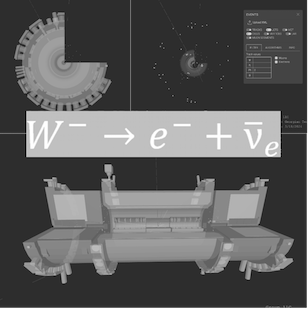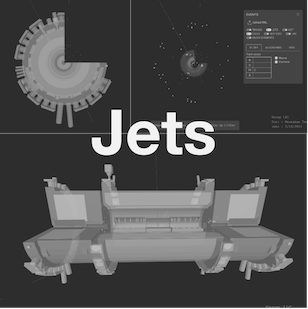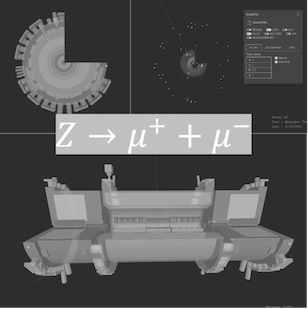Identifying Events with Tracer
Here, you'll learn how the events mentioned before look in Tracer 3D Display.
You will get to use your knowledge about identifying elementary particles.
You'll learn to choose events with a W particle as signal events and to distinguish them from the background events. Again, you'll find explanations about this in the form of a picture gallery.
Processos de Sinal
-
 In the end view you can see the signature of an electron with high transverse momentum and a neutrino (Missing ET = 27 GeV) going in the opposite direction.
In the end view you can see the signature of an electron with high transverse momentum and a neutrino (Missing ET = 27 GeV) going in the opposite direction.
-
 A informação do traço do leptão carregado diz-nos que é realmente um electrão (repare no sinal negativo).
A informação do traço do leptão carregado diz-nos que é realmente um electrão (repare no sinal negativo).
Processos de Fundo
-
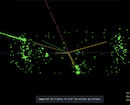 Este acontecimento distingue-se dos acontecimentos de sinal porque se pode observar mais do que um jacto de partículas.
Este acontecimento distingue-se dos acontecimentos de sinal porque se pode observar mais do que um jacto de partículas.
-
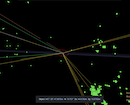 This picture shows an even more enlarged view of the event.
You can see very well how the bundles of particles originate from the interaction vertex (red).
This picture shows an even more enlarged view of the event.
You can see very well how the bundles of particles originate from the interaction vertex (red).
-
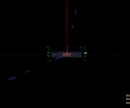 Esta imagem mostra o decaimento de um bosão Z (ou Z0), que é o mediador electricamente neutro da interacção fraca. O bosão Z decaiu imediatamente após a sua criação em um muão e um anti-muão.
Esta imagem mostra o decaimento de um bosão Z (ou Z0), que é o mediador electricamente neutro da interacção fraca. O bosão Z decaiu imediatamente após a sua criação em um muão e um anti-muão.
-
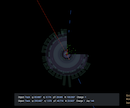 As you can see from this view into the direction of the proton beam muon and anti-muon going back to back.
Both particles might arise from one particle that decayed after its creation.
Cross-checks are always better in order to proof the assumption that a Z particle was produced.
Both muons have distinct electric charges.
As you can see from this view into the direction of the proton beam muon and anti-muon going back to back.
Both particles might arise from one particle that decayed after its creation.
Cross-checks are always better in order to proof the assumption that a Z particle was produced.
Both muons have distinct electric charges.
-
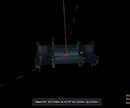 Furthermore there is no missing transverse momentum at all, meaning: A neutrino was probably not produced.
Furthermore there is no missing transverse momentum at all, meaning: A neutrino was probably not produced.
